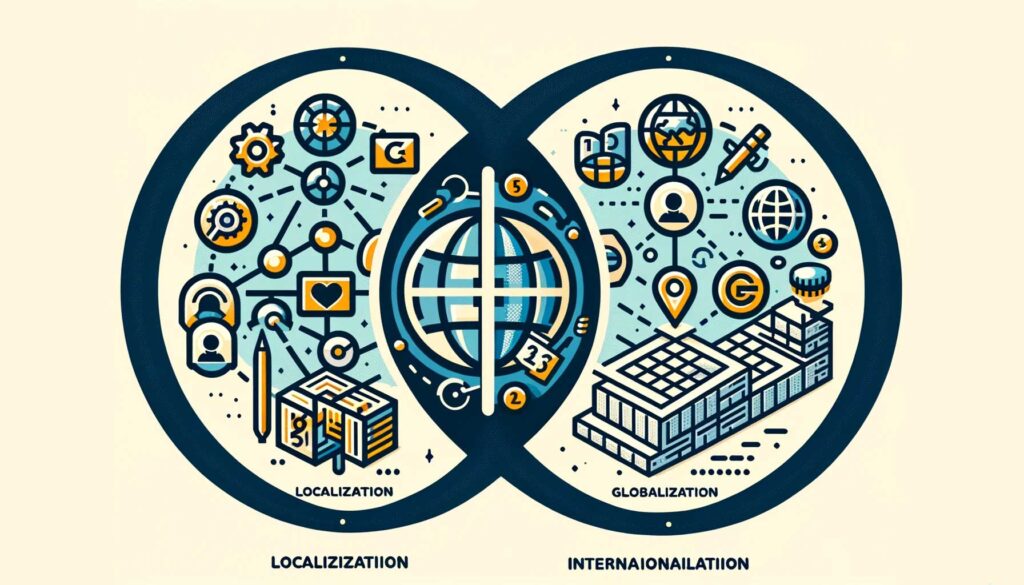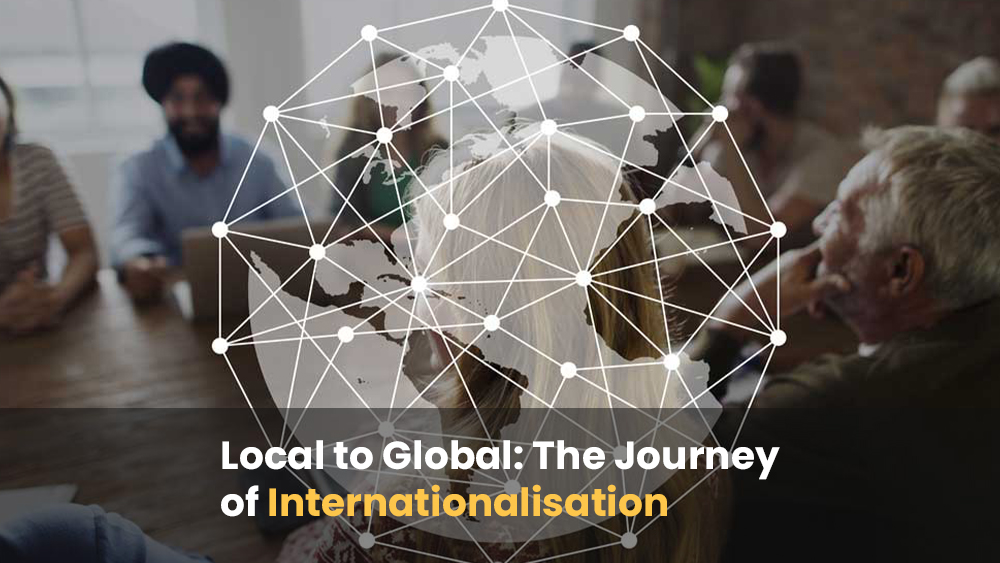Internationalisation refers to the process of designing a product or service in a way that can be easily adapted and consumed across multiple countries. This process is used by companies looking to expand their global footprint beyond their domestic market. By understanding that consumers abroad may have different tastes, preferences, or habits, companies can design products that cater to their specific needs, making them more appealing and relevant to a broader audience.
Internationalisation is a key component of globalisation, enabling businesses to reach new markets and expand their customer base. It also helps break down barriers between different cultures and languages, making it easier for people to connect and engage with each other. Overall, internationalisation is necessary for companies looking to succeed in today’s globalized economy.
This article aims to examine the concept of internationalisation and its various applications in the business world. It also highlights the benefits of implementing internationalisation strategies and how companies can adapt and thrive in the global market.
Table of Contents
Market Expansion and Multinational Business Strategies

What is the importance of market expansion and multinational business strategies in internationalisation?
Market expansion and multinational business strategies are essential for businesses that want to grow and remain competitive. Expanding into new markets enables firms to increase their revenue streams, diversify their customer base, and reduce dependence on a single market. Similarly, multinational business strategies help businesses to take advantage of economies of scale, reduce costs, and increase efficiency.
Market expansion and multinational business strategies also help businesses to mitigate risk. Businesses can reduce their exposure to local economic, political, and social risks by diversifying their operations across multiple countries.
What are some strategies for successful market expansion and multinational business strategies in internationalisation?
There are several strategies that businesses can adopt for successful market expansion and multinational business strategies in internationalisation:
- Conduct thorough market research to identify target markets and their unique characteristics.
- Develop strong relationships with local partners, such as distributors, suppliers, and local businesses.
- Build a strong brand and reputation to differentiate the business from competitors and build trust with customers.
- Adopt a flexible approach and adapt to local market conditions (localisation).
- Develop a global business model that can adapt to local markets.
- Develop a strong culture of communication and collaboration across all countries to ensure that all parts of the business are aligned.
- Comply with local laws and regulations.
- Develop a global mindset and be willing to learn from local markets and adapt strategies accordingly.
By adopting these strategies, businesses can successfully expand into new markets and manage operations across multiple countries, maximising the benefits of internationalisation.
Localisation, Adaptation and Foreign Market Entry

What is the Importance of localisation, adaptation and foreign market entry in internationalisation?
Localisation, adaptation, and foreign market entry are crucial aspects of internationalisation. Adapting products and services to fit local cultures and preferences is essential to succeed in foreign markets. Localisation and adaptation also help businesses to overcome language and cultural barriers, making it easier to connect with local customers.
Moreover, foreign market entry strategies help businesses identify the best entry mode and market entry timing. By using these strategies, as well as the strategies above, businesses reduce risks and avoid costly mistakes. This concludes that by focusing on localisation, adaptation, and foreign market entry, businesses can maximise their chances of success in international markets.
What are some strategies for successful localisation, adaptation and foreign market entry in internationalisation?
Strategies for successful localisation, adaptation and foreign market entry in internationalisation include conducting thorough market research to understand the target market’s cultural norms and preferences, adapting marketing materials and product offerings to meet local needs, and developing strong relationships with local partners and suppliers.
Another important strategy is investing in professional translation and localisation services to ensure your content is accurately translated and culturally appropriate. This is where companies like Pollion can be of great help. Pollion is a leading localisation, translation, and interpretation service provider for businesses looking to expand into foreign markets. Pollion’s team of expert linguists can help ensure that your content is translated accurately and effectively and that your brand message resonates with your target audience. This can help businesses to successfully navigate the challenges of internationalisation and achieve success on a global scale.
What company exemplifies successful global internationalisation?
One example of a company that has successfully implemented internationalisation strategies and expanded its reach globally is Aramex. Aramex is a logistics and transportation company based in Dubai, UAE, with operations in over 65 countries worldwide.
Aramex has successfully implemented internationalisation strategies by investing in innovative technologies, developing strong partnerships with local distributors and suppliers, and maintaining a focus on customer satisfaction. The company has also adopted a flexible approach and adapted to local market conditions, which has helped it establish a strong presence in each target market.
Aramex has also successfully used its global network to offer customers a range of logistics and e-commerce solutions. For example, the company has developed technologies that enable businesses to manage their supply chains more efficiently and cost-effectively.
Overall, Aramex’s success in implementing internationalisation strategies is a testament to the importance of investing in innovative technologies, developing solid partnerships, and maintaining a focus on customer satisfaction. By adopting a flexible approach and adapting to local market conditions, businesses can successfully expand into new markets and achieve long-term success in the global economy.
Differences between Localisation, Globalisation, and Internationalisation

What are the key differences between localisation, globalisation, and internationalisation?
While localisation, globalisation, and internationalisation are related concepts, they each have distinct differences:
- Localization involves adapting products and content to meet a local market’s language, culture, and other specific requirements.
- Globalization involves making products, services, and content available to a global audience by standardising them to enable their use across different markets and cultures.
- Internationalisation involves designing products, services, and content in a way that can be easily adapted to meet the specific needs of different markets around the world, including flexible business processes that can be applied across different markets.
The key difference between localisation and globalisation is that localisation focuses on adapting products and content to meet the specific needs of a local market. In contrast, globalisation focuses on standardising products and content to make them usable across different markets.
Another key difference between internationalisation and the other two concepts is that internationalisation involves designing products and services that can quickly adapt to different markets’ needs. At the same time, localisation and globalisation are more focused on adapting and standardising existing products and content.
Overall, understanding the differences between these three concepts is vital for businesses looking to expand into global markets, as it can help them develop effective strategies for success in different markets around the world.
Conclusion
In conclusion, internationalisation is a critical strategy for businesses looking to expand their global footprint and succeed in today’s globalised economy. It involves designing products and services in a way that can be easily adapted and consumed across multiple countries and involves a range of activities, including adapting to different languages and cultures, complying with local regulations and ensuring that the products or services meet the quality standards of the target market.
The benefits of internationalisation include diversification of revenue streams, reduction of dependence on a single market, mitigation of risks, and increased efficiency. Market expansion, multinational business strategies, localisation, adaptation and foreign market entry are all crucial aspects of internationalisation.
Whilst localisation, globalisation, and internationalisation are often used interchangeably, they each have distinct differences. Understanding the differences between these concepts is essential for businesses looking to expand into global markets.
Looking ahead, internationalisation will continue to play a critical role in the global business environment as businesses strive to expand their reach and connect with customers worldwide. With the right strategies and approaches in place, businesses of all sizes can successfully navigate the challenges of internationalisation and achieve long-term success on a global scale.
Read more
- E-learning Translation: Meeting the Demands of the Global Market
- Translators and Interpreters: Bridging the Language Gap
- Effective Translations and Localization for Middle Eastern Countries
- Navigating Business and Language Diversity in Iraq
- Celebrating World Arabic Language Day
- Maximizing Language Services for Success: Essential Strategies
- Should You Translate Your Brand Name?
- Can You Learn English with AI?
- Common Localization Mistakes to Avoid for a Hassle-Free Global Launch
- Beginning with Email Translation and Customization: A Guide for Beginners
- Debunking Common Translation Myths
- The Power of Translation Memory: A Guide
- Global Success for an E-Commerce Marketing
- Bridging Barriers to the Kurdish Language
- Introducing the Languages of the World
